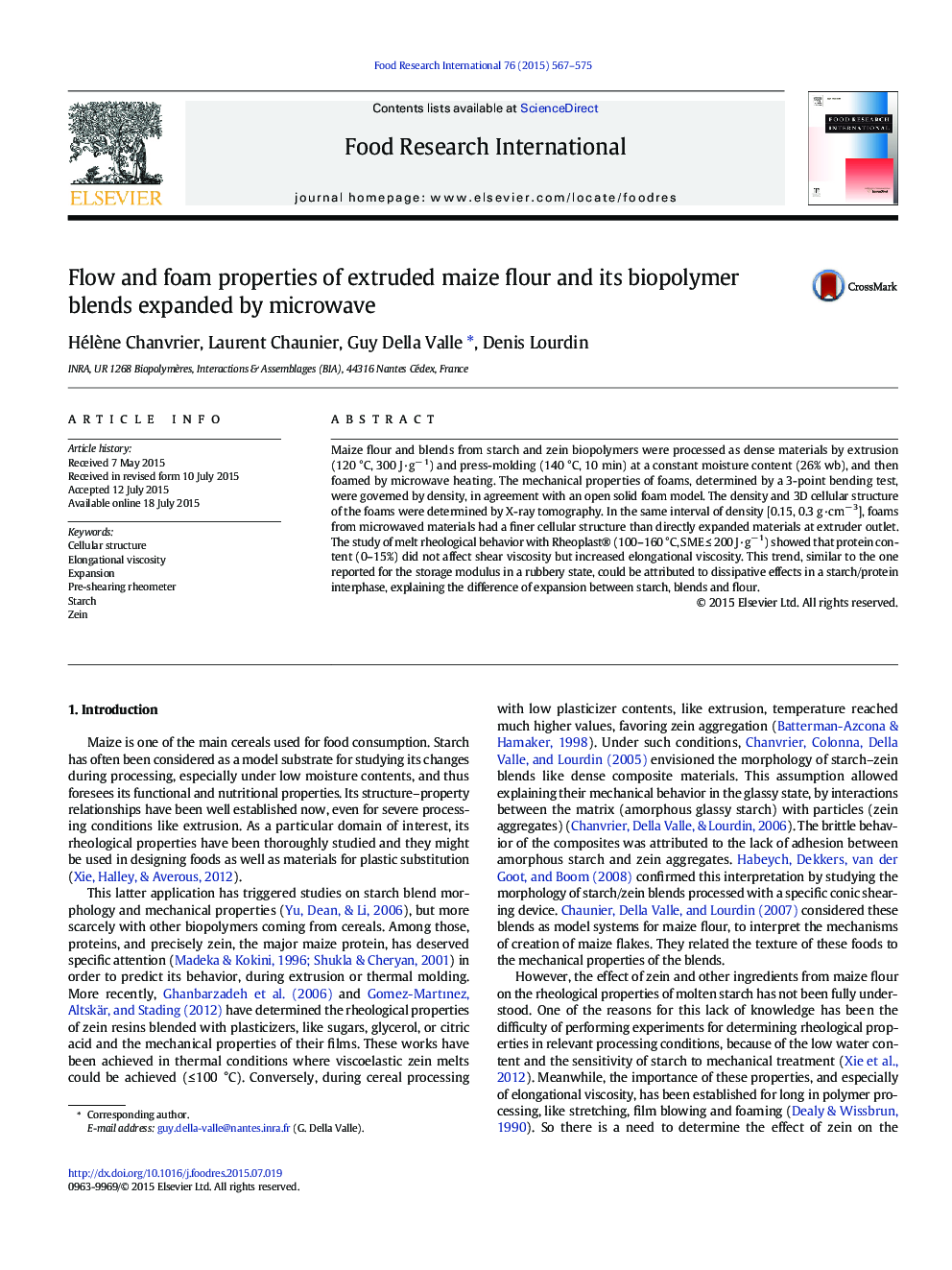| Article ID | Journal | Published Year | Pages | File Type |
|---|---|---|---|---|
| 6395185 | Food Research International | 2015 | 9 Pages |
â¢Elongational viscosity ηE of maize biopolymer melts was determined by Rheoplast®.â¢Zein content (â¤Â 15%) had a weak influence on shear viscosity but increased ηE.â¢Foam cellular structure of microwave expanded blends was thinner than extruded ones.â¢Normalized mechanical properties of foams followed the model of open cellular solids.â¢Î·E values, varying like storage modulus, explained maize biopolymer melt expansion.
Maize flour and blends from starch and zein biopolymers were processed as dense materials by extrusion (120 °C, 300 J·gâ 1) and press-molding (140 °C, 10 min) at a constant moisture content (26% wb), and then foamed by microwave heating. The mechanical properties of foams, determined by a 3-point bending test, were governed by density, in agreement with an open solid foam model. The density and 3D cellular structure of the foams were determined by X-ray tomography. In the same interval of density [0.15, 0.3 g·cmâ 3], foams from microwaved materials had a finer cellular structure than directly expanded materials at extruder outlet. The study of melt rheological behavior with Rheoplast® (100-160 °C, SME â¤Â 200 J·gâ 1) showed that protein content (0-15%) did not affect shear viscosity but increased elongational viscosity. This trend, similar to the one reported for the storage modulus in a rubbery state, could be attributed to dissipative effects in a starch/protein interphase, explaining the difference of expansion between starch, blends and flour.
